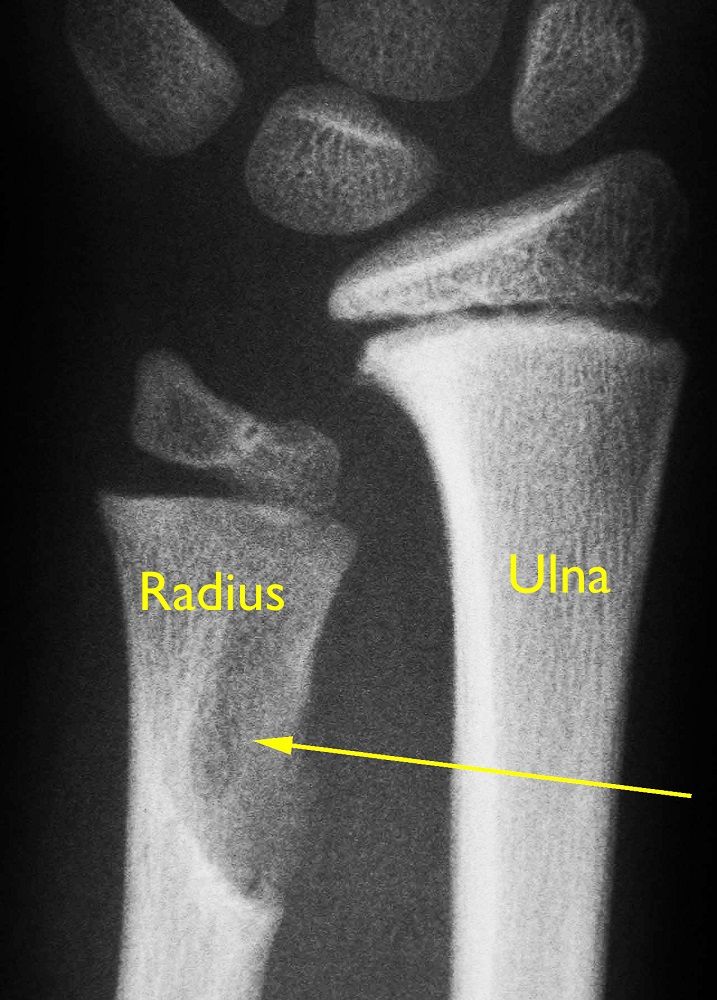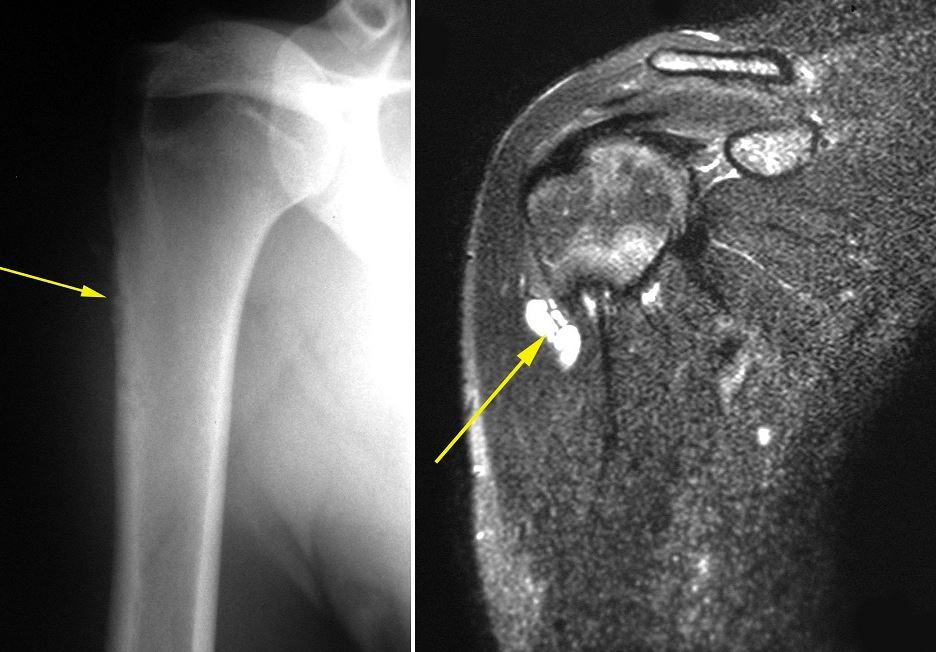Diseases & Conditions
Periosteal and Soft Tissue Chondromas
Chondromas are benign (noncancerous) tumors that are made of cartilage — the flexible, connective tissue that protects the ends of bones where they meet to form joints. Chondromas are most often found in the small bones of the hands and feet, as well as the humerus (upper arm bone) and femur (thighbone).
There are different types of chondromas, classified according to where they form on the bone. A periosteal chondroma develops on the surface of bone, out of the periosteum, which is a strong membrane that covers bones.
Soft tissue chondromas are not connected to bone. They most often form on the tendons that attach muscles to bone or to the tendon sheaths that keep tendons in place next to bone. Soft tissue chondromas also sometimes grow out of the joint capsule, a dense, fibrous tissue that encloses a joint and provides stability.
Although they have similarities, periosteal and soft tissue chondromas are less common than chondromas that form on the inside of bone (enchondromas) and those that grow out from bone (osteochondromas).
Description
When examined with the naked eye, chondromas appear as glistening, bluish-white tumors with occasional yellow, gritty calcifications. Under the microscope, the tumor contains bluish cartilage with a lobulated, or divided, appearance.
Periosteal Chondromas
Periosteal chondromas are also known as cortical chondromas, juxtacortical chondromas, pericortical chondromas or eccentric chondromas. Although they occur in people of all ages, the majority of these tumors occur in those younger than 30 years of age.
Periosteal chondromas grow slowly over months or even years. They typically measure 1 to 2 cm in diameter in the tube-like bones of the hands and feet, and up to 3 or 4 cm in the humerus or femur.
In some cases, periosteal chondromas will cause swelling and a dull, aching pain. Some people are able to feel the tumor mass, particularly those with chondromas on the fingers and toes. Tumors in the fingers and toes are also more likely to cause pain.
Over time, periosteal chondromas can erode the underlying bone, creating a saucer-shaped depression. A hard, white border (sclerosis) develops on the side of the tumor that faces the bone.
Soft Tissue Chondromas
Soft tissue chondromas most commonly develop during middle age. Although they rarely measure more than 3 cm in diameter, they are often noticeable, appearing as nodules or lumps in the small bones of the fingers, hands, toes, and feet.
Most patients have a single tumor or mass that is not painful.
Cause
The cause of periosteal chondromas and soft tissue chondromas is unknown. There are no known risk factors—genetics, injury, infection or radiation—for these noncancerous tumors.
Doctor Examination
Medical History and Physical Examination
Before a physical examination, your doctor will talk with you about your general health and your symptoms in order to get a good history of the problem. During the physical examination, your doctor will look for tenderness over the bone, swelling and a mass in the area of your symptoms.
Tests
Your doctor will consider other types of tumor masses during the examination. In order to accurately diagnose either type of chondroma, your doctor will order imaging or tissue tests.
X-rays. These tests provide clear pictures of dense structures like bone, and are helpful in diagnosing chondromas.
In x-rays, a periosteal chondroma shows up as a soft tissue shadow with erosion of the underlying bone. They are often surrounded by a white (sclerotic) rim. A periosteal chondroma always develops at the outside border of the bone. Sometimes, the tumor cells can calcify (start to turn into bone), which shows up as white speckles on an x-ray.
Soft tissue chondromas do not always show up in x-rays because they do not always calcify. They can, however, cause similar erosions of bone due to a pressure effect.
Other imaging scans. Computerized tomography (CT) scans can be helpful in evaluating the degree and characteristics of bone involvement. In addition, a magnetic resonance imaging (MRI) scan can help further define the tumor and its relationship to bone. These scans can provide more detail, especially of soft tissues. They can also provide cross-sectional images.
Biopsy. If imaging tests are inconclusive, your doctor will perform a biopsy. In a biopsy, a tissue sample of the tumor is taken and examined under a microscope. Your doctor may give you a local anesthetic to numb the area and take a sample using a needle. Biopsies can also be performed as a small operation.
Treatment
Both periosteal chondromas and soft tissue chondromas are easily identified as distinct and separate masses and can be surgically removed.
Procedure. To completely remove the tumor, your doctor will perform a surgical procedure called excision. In this procedure, you will be given a form of anesthesia to numb the area around the tumor. After the anesthesia is given, your doctor will make an incision in your skin and cut the tumor out.
Recurrence. These tumors rarely return after complete removal. No chemotherapy or radiation is needed.
Recovery
How long it takes to return to daily activities will vary depending on the tumor's size and location. Most patients recover quickly, except in the rare situation where extensive reconstruction of a bone is required. In these cases, recovery may be longer and require immobilization and limited use of the affected area. Your doctor will provide you with specific instructions to guide your recovery.
Last Reviewed
July 2019
Contributed and/or Updated by
Peer-Reviewed by
AAOS does not endorse any treatments, procedures, products, or physicians referenced herein. This information is provided as an educational service and is not intended to serve as medical advice. Anyone seeking specific orthopaedic advice or assistance should consult his or her orthopaedic surgeon, or locate one in your area through the AAOS Find an Orthopaedist program on this website.








